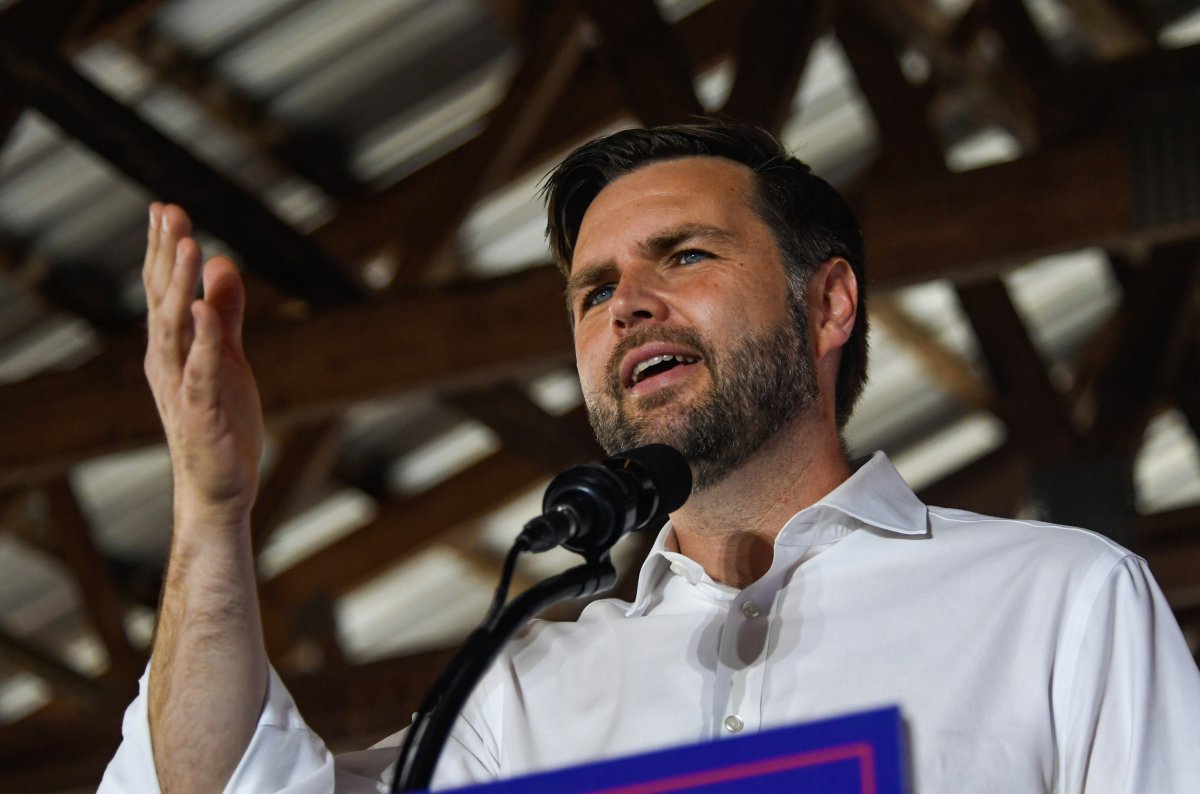Senator JD Vance faces criticism for blaming rising egg prices on Vice President Kamala Harris, overlooking the impact of avian influenza and inflation on the poultry industry.
Senator JD Vance, the Republican candidate for U.S. vice president, recently found himself at the center of online ridicule after making misleading statements about the rising price of eggs during a campaign stop in Pennsylvania. In an attempt to blame Vice President Kamala Harris, the Democratic nominee for president, Vance’s claims about egg prices quickly unraveled, exposing his lack of attention to critical factors influencing the cost of eggs, including the ongoing impact of avian influenza.
The Egg Price Blunder
During his Pennsylvania campaign stop, Vance stood in front of an egg cooler, making a case that the rise in egg prices was due to the inflationary policies set by Vice President Harris. He asserted, “Eggs, when Kamala Harris took office, were short of $1.50 a dozen. Now, a dozen eggs will cost you around $4, thanks to Kamala Harris’ inflationary policies.”
However, this narrative quickly fell apart. Internet users immediately pointed out that the price signs behind Vance clearly showed eggs priced at $2.99 per dozen, not the $4 he claimed. To make matters worse, Vance held up a carton that contained more than a dozen eggs, further confusing his attempt to comment on the price of a dozen eggs.
This blunder left Vance open to ridicule, with social media commenters mocking his claims and accusing him of lying. Yet the price discrepancy wasn’t the only issue. Vance also failed to mention the critical role that avian influenza has played in driving up egg prices—a glaring omission that highlights his lack of understanding of the situation.
The Role of Highly Pathogenic Avian Influenza (HPAI)
Vance’s egg price stunt overlooks a significant factor: the widespread losses of laying hens due to highly pathogenic avian influenza (HPAI), which has been a major contributor to the rising cost of eggs. The outbreak of HPAI, which began in 2022 and continues to affect the U.S. poultry industry, has led to millions of bird deaths, reducing egg supplies and driving up prices. These losses have had a direct impact on egg producers across the country, including in Ohio, which Vance represents.
Despite the clear link between HPAI and rising egg prices, Vance neglected to mention the disease’s impact during his campaign stop. His failure to acknowledge the ongoing challenges faced by the poultry industry, particularly in his home state of Ohio, further fueled criticism that he is out of touch with the realities affecting both his constituents and the broader agricultural sector.
Ohio’s Poultry Industry: Vance’s Negligence
Ohio is the second-largest egg-producing state in the country, making it all the more surprising that Vance seems unaware of or unwilling to address the massive losses the state’s poultry industry has faced due to HPAI. According to the U.S. Department of Agriculture (USDA) National Agricultural Statistics Service, Ohio lost more than 8.2 million laying hens to the virus between 2022 and 2023. In addition, the state lost over 1.3 million pullets—young hens that would have grown to become egg layers—further reducing its egg supply. These figures are significant and have directly contributed to higher egg prices.
Yet, during his commentary on egg prices, Vance made no mention of these losses, choosing instead to blame Harris’s policies. This omission not only demonstrates a lack of understanding of the poultry industry’s current challenges but also insults the very farmers and producers Vance is supposed to represent.
A Pattern of Misinformation
This isn’t the first time Vance has demonstrated a lack of attention to agricultural issues. Just weeks before his egg price blunder, Vance revealed that he didn’t know Tom Vilsack was the U.S. Secretary of Agriculture—a basic fact that any politician representing an agricultural state like Ohio should be aware of. This, coupled with his misinformed egg price comments, raises serious questions about Vance’s ability to represent the interests of his state’s agricultural sector.
What’s more concerning is that Vance’s flawed narrative is not unique. Other Republican politicians, including Senator Rick Scott, Representative Ron Estes, and South Dakota Governor Kristi Noem, have similarly tried to blame the current administration for rising food prices without acknowledging the significant impact of animal diseases like HPAI. Economists and agricultural experts have repeatedly pointed out that while inflation has affected many goods, the rise in egg prices is largely due to supply shortages caused by the avian flu outbreak.
The Reality of Egg Prices and HPAI
The reality is that egg prices are influenced by a combination of factors, including inflation and supply chain disruptions. However, when it comes to the recent rise in egg prices, HPAI has played the most significant role. The widespread loss of laying hens has drastically reduced egg supplies, causing prices to increase. To ignore this factor, as Vance did, is to ignore the core issue facing the egg industry.
By focusing solely on inflation and the policies of the opposing political party, Vance missed an opportunity to address the real challenges facing his state’s farmers and poultry producers. Instead, he chose to engage in a publicity stunt that only served to highlight his ignorance of the facts.
Conclusion
Senator JD Vance’s attempt to blame rising egg prices on Vice President Kamala Harris backfired, revealing a lack of understanding of the factors driving those price increases. His failure to acknowledge the devastating impact of highly pathogenic avian influenza on the egg industry, particularly in his home state of Ohio, exposes him as out of touch with the realities of agricultural production.
Egg prices are indeed higher than they were several years ago, but the primary cause is the reduced supply due to bird losses from HPAI—not inflationary policies. By ignoring this critical factor, Vance has shown that he is not only disconnected from the concerns of Ohio’s poultry industry but also ill-prepared to address the complex issues affecting American agriculture.
